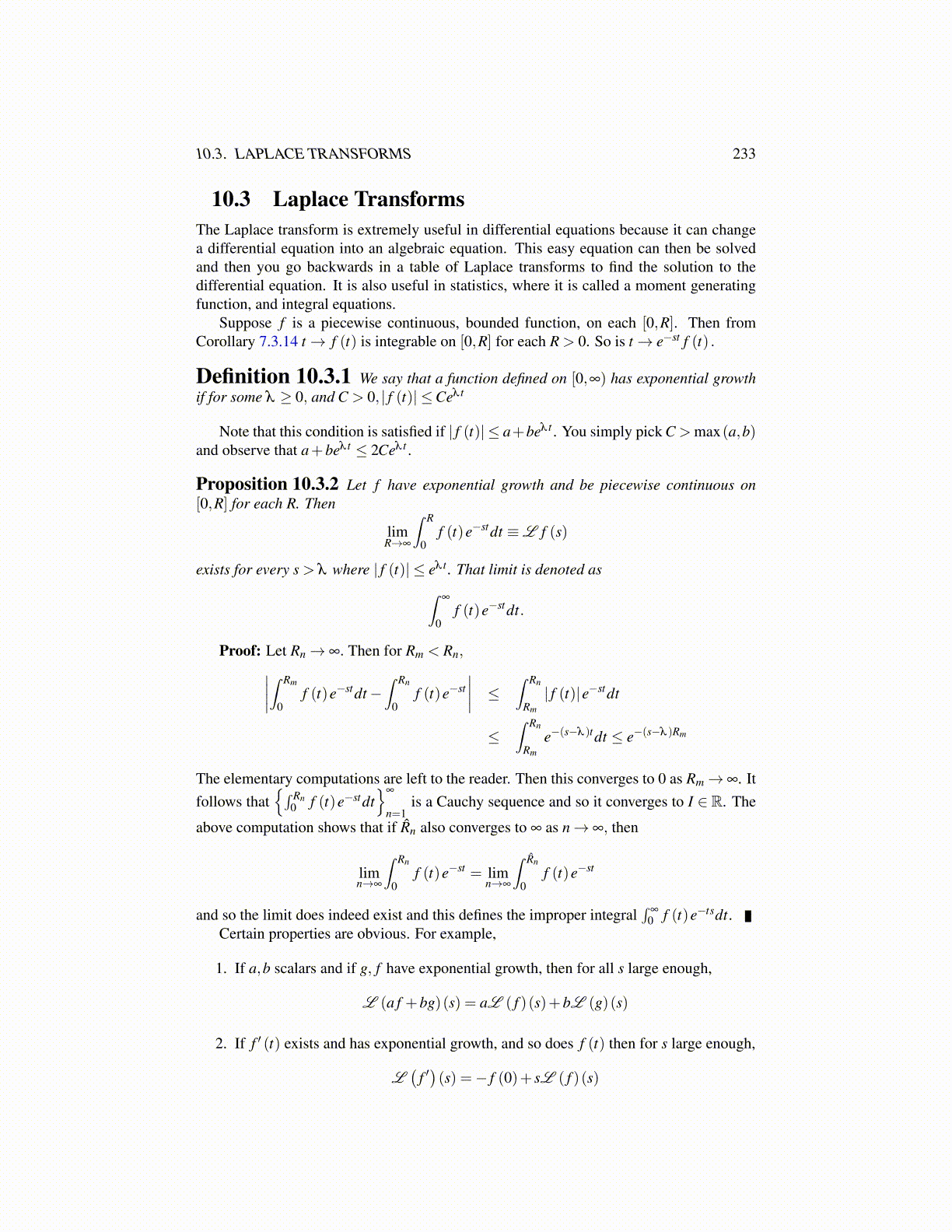
10.3. LAPLACE TRANSFORMS 233
10.3 Laplace TransformsThe Laplace transform is extremely useful in differential equations because it can changea differential equation into an algebraic equation. This easy equation can then be solvedand then you go backwards in a table of Laplace transforms to find the solution to thedifferential equation. It is also useful in statistics, where it is called a moment generatingfunction, and integral equations.
Suppose f is a piecewise continuous, bounded function, on each [0,R]. Then fromCorollary 7.3.14 t → f (t) is integrable on [0,R] for each R > 0. So is t → e−st f (t) .
Definition 10.3.1 We say that a function defined on [0,∞) has exponential growthif for some λ ≥ 0, and C > 0, | f (t)| ≤Ceλ t
Note that this condition is satisfied if | f (t)| ≤ a+beλ t . You simply pick C > max(a,b)and observe that a+beλ t ≤ 2Ceλ t .
Proposition 10.3.2 Let f have exponential growth and be piecewise continuous on[0,R] for each R. Then
limR→∞
∫ R
0f (t)e−stdt ≡ L f (s)
exists for every s > λ where | f (t)| ≤ eλ t . That limit is denoted as∫∞
0f (t)e−stdt.
Proof: Let Rn → ∞. Then for Rm < Rn,∣∣∣∣∫ Rm
0f (t)e−stdt −
∫ Rn
0f (t)e−st
∣∣∣∣ ≤∫ Rn
Rm
| f (t)|e−stdt
≤∫ Rn
Rm
e−(s−λ )tdt ≤ e−(s−λ )Rm
The elementary computations are left to the reader. Then this converges to 0 as Rm → ∞. Itfollows that
{∫ Rn0 f (t)e−stdt
}∞
n=1is a Cauchy sequence and so it converges to I ∈ R. The
above computation shows that if R̂n also converges to ∞ as n → ∞, then
limn→∞
∫ Rn
0f (t)e−st = lim
n→∞
∫ R̂n
0f (t)e−st
and so the limit does indeed exist and this defines the improper integral∫
∞
0 f (t)e−tsdt.Certain properties are obvious. For example,
1. If a,b scalars and if g, f have exponential growth, then for all s large enough,
L (a f +bg)(s) = aL ( f )(s)+bL (g)(s)
2. If f ′ (t) exists and has exponential growth, and so does f (t) then for s large enough,
L(
f ′)(s) =− f (0)+ sL ( f )(s)